Japan’s traditional art of furoshiki wrapping is experiencing a modern revival, and the Furoshiki Workshop with Kimono Fabric offers an immersive way to explore this sustainable practice. Participants will discover the intricate patterns and vibrant colors of authentic kimono fabrics as they master the folding techniques guided by a bilingual instructor. More than just a craft class, this hands-on experience imparts practical skills for daily life while celebrating Japanese culture and eco-friendly habits. Those seeking to add a unique touch to their gift-giving or lifestyle would find this workshop worth considering.
Key Points
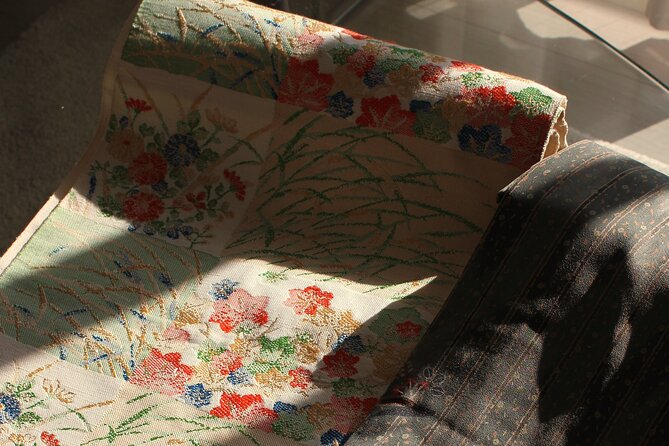
- Participants learn the art of furoshiki wrapping using traditional Japanese kimono fabrics.
- Workshops provide guidance on various folding techniques for wrapping books, gifts, bottles, and bento boxes.
- Hands-on experience in working with intricate, hand-painted or hand-dyed kimono textiles.
- Furoshiki techniques taught by English and Japanese-speaking instructors for skill development.
- Incorporating furoshiki into daily life as reusable bags, decorative scarves, and eco-friendly gift wrapping.
What Is Furoshiki?
Furoshiki is a traditional Japanese wrapping cloth used for a variety of purposes, from carrying items to gift-giving.
These versatile cloths come in various sizes and can be folded and tied in numerous ways to suit different needs.
Furoshiki isn’t only practical but also aesthetically pleasing, often featuring intricate designs and patterns inspired by nature or traditional Japanese art.
The use of furoshiki promotes sustainability by reducing the need for disposable packaging, making it an eco-friendly alternative to plastic bags and wrapping paper.
This ancient Japanese art form continues to be celebrated and practiced today.
You can also read our reviews of more tours and experiences in Tokyo
Kimono Fabric: A Rich Textile Tradition
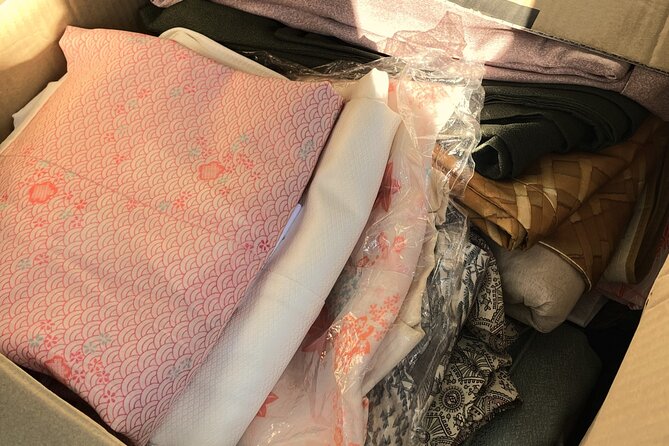
Kimono fabrics embody a rich textile tradition in Japan, showcasing intricate patterns and vibrant colors that have captivated the world.
The fabrics are meticulously crafted, often featuring hand-painted or hand-dyed designs that can take weeks or even months to complete.
From the iconic cherry blossom motifs to the more abstract geometric patterns, each kimono fabric tells a unique story of Japanese culture and artistry.
These textiles aren’t just functional garments but works of art, prized for their beauty and the skilled craftsmanship that goes into their creation.
Participants in the Furoshiki Workshop will have the opportunity to work with these remarkable fabrics.
The Furoshiki Workshop Experience
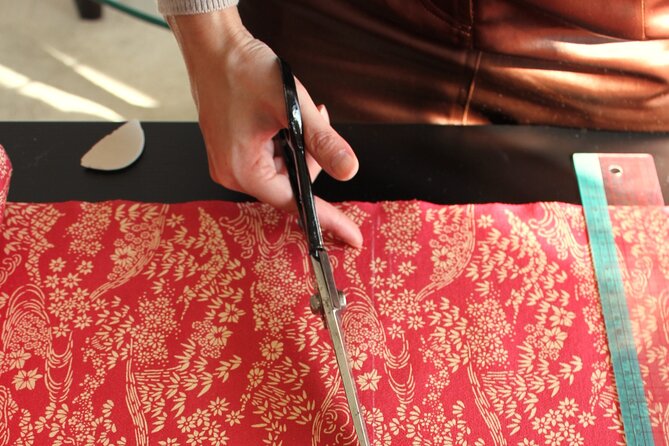
At the workshop, you will learn the art of furoshiki, the traditional Japanese wrapping cloth, by working with the vibrant and intricate kimono fabrics.
Under the guidance of an English and Japanese-speaking instructor, they’ll discover the versatility of furoshiki, learning how to wrap items such as:
- Books
- Gifts
- Bottles
- Bento boxes
The workshop provides all the necessary materials, including sewing machines, scissors, and thread, allowing participants to create their own unique furoshiki designs.
This hands-on experience offers a glimpse into the rich textile traditions of Japan.
Learning the Art of Folding Furoshiki
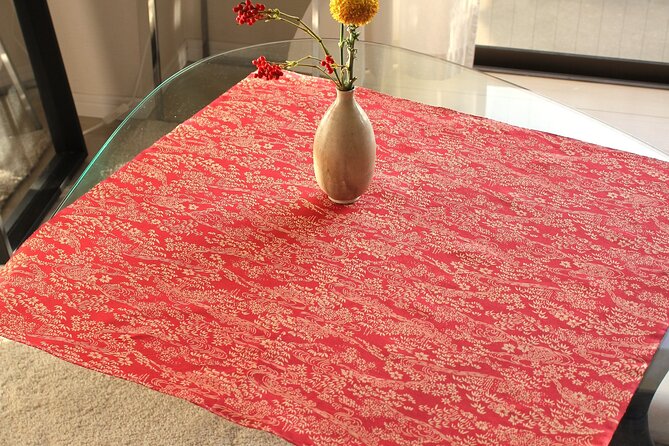
Participants will start by learning the basic techniques of furoshiki folding, which allow them to wrap a variety of items with ease.
The guide will demonstrate how to create simple, elegant wraps for small gifts, bottles, and bento boxes.
Learners will practice folding techniques, experimenting with different kimono fabric designs and sizes.
As they progress, the workshop covers more advanced furoshiki styles, such as the four-corner wrap and the bags and pouches.
Incorporating Furoshiki Into Daily Life
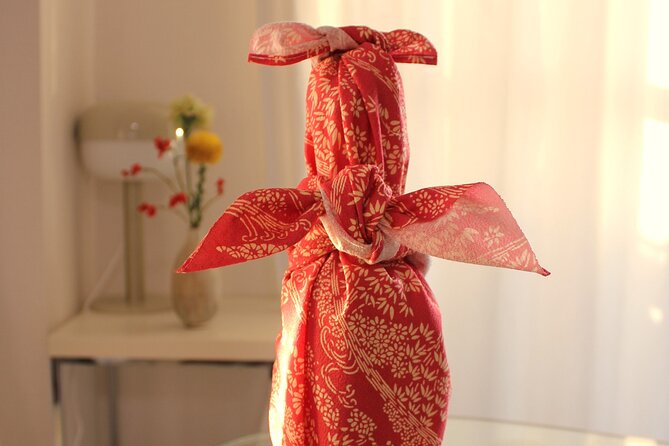
How can one seamlessly incorporate the art of furoshiki into their daily lives?
Furoshiki’s versatility makes it a practical addition to any lifestyle.
Consider these four ways to easily integrate it:
-
Wrap gifts with furoshiki instead of traditional wrapping paper.
-
Use furoshiki as a reusable bag for grocery shopping or carrying other items.
-
Employ furoshiki to transport and protect delicate items, such as water bottles or bento boxes.
-
Explore furoshiki’s decorative potential by using it as a scarf, shawl, or even a table runner.
Embracing furoshiki’s multifunctionality can add an elegant, eco-friendly touch to everyday tasks.
Benefits of Attending the Furoshiki Workshop

The Furoshiki Workshop offers a unique opportunity for participants to explore the captivating art of traditional Japanese fabric wrapping.
Attendees will learn how to expertly transform ordinary kimono fabrics into functional and aesthetically pleasing accessories. This hands-on experience equips participants with practical skills to incorporate Furoshiki into their daily lives, reducing waste and promoting sustainability.
On top of that, the workshop provides a glimpse into Japan’s rich cultural heritage, fostering a deeper appreciation for the country’s time-honored traditions.
Whether a seasoned crafter or a curious novice, the Furoshiki Workshop promises a rewarding and enriching experience.
Planning Your Furoshiki Workshop in Tokyo
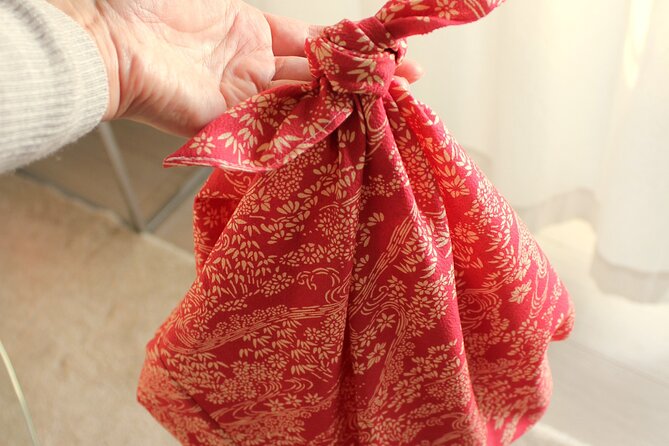
To plan your Furoshiki Workshop experience in Tokyo, it’s essential to consider the logistics and prepare accordingly.
The workshop provides all the necessary materials, including kimono fabric, sewing machines, and tools. The private transportation ensures a hassle-free arrival at the venue, Room 301 in Sunlight Koike.
The schedule, starting at 1 PM and returning to the meeting point, allows ample time to learn the art of Furoshiki.
Keep in mind the following considerations:
- Maximum of 4 travelers per session for a personalized experience.
- Wheelchair accessibility isn’t available.
- The venue is located near public transportation.
- Cancellation is free up to 24 hours before the event.
Frequently Asked Questions
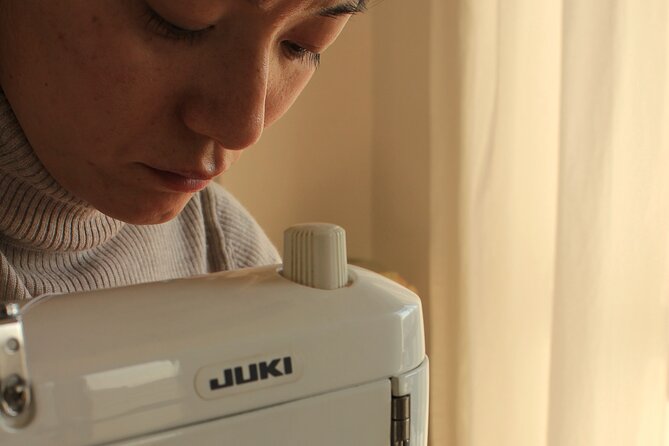
What Types of Knots and Techniques Will Be Taught During the Workshop?
The workshop will teach participants various furoshiki wrapping techniques using kimono fabric, including the basic square knot, flower knot, and other decorative folds. Guests will learn how to wrap items like bottles, books, and gifts in a traditional Japanese style.
Can I Take the Materials Home to Continue Practicing After the Workshop?
Yes, participants can take the workshop materials, including the kimono fabric, home to continue practicing the furoshiki techniques learned during the session. This allows travelers to further explore and hone their new skills after the workshop concludes.
Is There an Opportunity to Purchase Additional Kimono Fabric at the Event?
Yes, the workshop provides an opportunity to purchase additional kimono fabric on-site. Participants can purchase extra fabric if they’d like to continue practicing furoshiki techniques after the event.
Will the Guide Provide Recommendations for Where to Buy Furoshiki in Tokyo?
The guide will likely provide recommendations for where to purchase additional furoshiki fabric in Tokyo. They may suggest local markets, specialty stores, or other resources to explore further furoshiki options during the participant’s stay.
Can I Request Specific Colors or Patterns of Kimono Fabric for the Workshop?
Yes, you can request specific colors or patterns of kimono fabric for the workshop. The guide will work with you to select the fabric that suits your preferences within the materials provided for the event.
Sum Up
The Furoshiki Workshop with Kimono Fabric offers a unique opportunity to learn the art of sustainable wrapping and explore Japan’s rich textile traditions. Participants will master various folding techniques using beautiful kimono fabrics, while gaining practical skills for wrapping gifts and carrying items. This hands-on experience encourages the incorporation of eco-friendly practices into daily life, celebrating both culture and sustainability.
More Workshops & Classes in Tokyo
- Japanese Wagashi Nerikiri and Matcha Making Class in Tokyo
- Experience Japanese History Calligraphy Workshop in Tokyo
- Tokyo 7hr Private Guided Tour & Japanese Homemade Cooking Class
- Mini Origami Lamp and Mizuhiki Knot Belt Workshop in Ueno
- Tokyo Original Book Cover, Bookmark and Penholder Workshop
- Discover Japanese Coffee Experience Brewing Workshop
More Tour Reviews in Tokyo
- Tokyo Traditional Food Tour in a Small Group
- Private 1 Day Tour to Nikko: Onsen, UNESCO Shrines and Nature
- Tokyo 6 Hr Private Guided Tour & Rickshaw Experience
- Private Breakfast Tour at Tsukiji Outer Market
- Japan Autumn & Winter Illuminations Discovery Tour (12 Days)
- Old and New Tokyo Full Day Private Tour
Not for you? Here's more nearby things to do in Tokyo we have reviewed
- Tokyo Traditional Food Tour in a Small Group
- Private 1 Day Tour to Nikko: Onsen, UNESCO Shrines and Nature
- Tokyo 6 Hr Private Guided Tour & Rickshaw Experience
- Private Beginner Japanese Cooking Class Near Tokyo
- Private Breakfast Tour at Tsukiji Outer Market
- Japan Autumn & Winter Illuminations Discovery Tour (12 Days)
- Old and New Tokyo Full Day Private Tour
- 【Private】Sushi & Ramen Cooking & Sake Set in Tokyo!(+Recipe)
- Private 1 Day Tour to Kamakura: Sea, Temples, and Coastal Scenery
- Tokyo Castle & Imperial Palace , Historical Walking Tour
- One Way Shuttle Van Transfer, Tokyo⇔Hakone Area
- Barrier Free Transportation in Hakone, No Guide (Tokyo Dep.)
